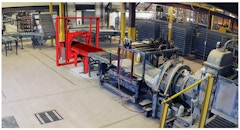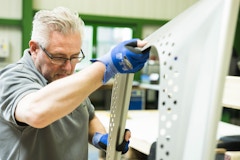
361 results
-
 The largest source of air pollution in North America is the atmospheric boundary layer of a city caused by its urban canyons with pollutants produced…
The largest source of air pollution in North America is the atmospheric boundary layer of a city caused by its urban canyons with pollutants produced… -
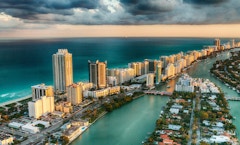
Event Passed
Facade Tectonics Forum: MIAMI
- Coral Gables, United States
FTI held its celebrated Forum in Miami with thought leaders to explore the amplified threats of climate change in the unique urban context of Miami.
Forum by Facade Tectonics Institute, Inc.
-
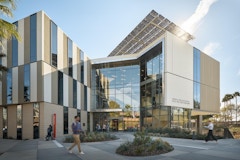
Designing with Photovoltaics
- Paper by Wayne Walker · Julia Ragragio Ruiz, LEED AP BD+C · Sam Crawford
Photovoltaics (PV) have been utilized in buildings for decades, especially in Europe where legislative support has largely driven the market. With
-
Blurred Edges
- Paper by Elizabeth L. McCormick AIA, WELL AP, LEED AP, CPHC, Assistant Professor
Sealed indoor environments have created artificial, homogeneous ecosystems that sever ties between humans and the natural world. This paper… -
Architectural Ceramic Assemblies
- Paper by Omar Khan · Bill Pottle · Mitchell Bring
This paper documents a six year academia/industry collaboration between researchers at the Department of Architecture, University at Buffalo (SUNY)
-

Event Passed
–High-Performance Building Facades
For architects, designers, engineers, manufacturers, consultants, and owners' representatives interested in methods for designing high-performance facades.
Industry Event by University of Massachusetts Amherst
-

APT Seattle Conference Symposium 2023: Aging Composite Materials and Assemblies
- Event by Association for Preservation Technology, APT Technical Committee on Modern Heritage
Aging modern heritage buildings and structures face complex repair and reinvestment challenges. Manufactured composite materials and multi-material assemblies often cannot be cost-effectively repaired or replaced in kind.
-
Hydroformed Shading
- Paper by Michelle Siu-Ching Lee · Robert Matthew Noblett · Roman Schieber
New approaches to lightweight metal forming have the potential to advance architectural fabrication, particularly in the design and engineering of
-

A Break From The Past: How the Guggenheim Renovation Made Thermally Broken Steel Windows a New Normal
- Article by Angel Ayón, AIA, NCARB, NOMA, LEED AP, Principal
-

Execution Ways
- Paper by Viswanath Urala, P.E. · Prakash R. Desai, P.E., S.E.
Business Insider has described San Francisco’s Chase Arena as setting “a new standard for a sports arena in the US”, and “the state-of-the-art arena
-

Vintage Vinyl
- Paper by Michael S. Plewacki,
Mid-century through 1980’s buildings with lock-strip or “zipper-gasket” glazing systems are an ever present part of the urban landscape in many… -
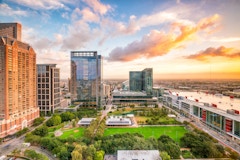
Event Passed
Facade Tectonics Forum: HOUSTON
- Houston, United States
FTI's celebrated Forum in Houston brought together thought leaders to explore the amplified threats of climate change in the unique urban context of Houston.
Forum by Facade Tectonics Institute, Inc.
-

APT Washington 2021: Preservation Beyond Politics
- Event by Association for Preservation Technology
College of Fellows Keynote: ‘Things That Should Look Permanent Forever’: The Challenges of Preserving the Washington Metro
-
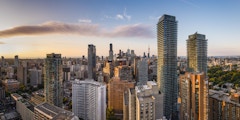
Event Passed
Facade Tectonics Forum: TORONTO
- Toronto, Canada
The sold out 2019 Toronto Forum brought together AECO industry thought leaders to confront themes central to ever-evolving facade technology, themes engaging facade design, delivery, renewal, materiality, sustainability and resilience.
Forum by Facade Tectonics Institute, Inc.
-
Contextualizing Glass and Carbon Impacts
- Paper by Kayla Natividad, PhD, WELL AP, LEED Green Associate, Architectural Technical Service Engineer Kyle Sword, Manager Business Development
Climate change goals will require significant improvements in the way buildings are constructed and operated. Building reuse can combat climate… -
Facade Embodied Carbon Reduction Strategies
- Paper by Isabelle Hens, LEED AP BD+C, WELL AP, Senior Environmental Designer
Facades are increasingly being recognized as a major contributor to whole-building embodied carbon. While designers know how to reduce the embodied… -

Modern Heritage and Facade Improvements
- Paper by Uta Pottgiesser, Angel Ayón,
Approximately 80% of our total building stock is from the 20th century. During the last decades, along with an increasing appreciation of modern… -

Evaluating Additive Manufacturing for Metallic Facade Components
- Paper by Natasa Mrazovic, M. Arch. Eng., M.C.E., Martin Fischer,
The state-of-the-art of Additive Manufacturing (AM), popularly known as 3D printing, shows its prospective future in the… -
Reglaze or Replace?
- Paper by Angel Ayón, AIA, LEED AP, Principal Laura Boynton, AIA, LEED AP, Senior Associate
Originally known as The Master Building, 310 Riverside Drive in Manhattan's Upper West Side is a 28-story tower completed in 1929 as an apartment… -

CR∆CKİNG THЄ CDЄ // DYN∆MİC L∆B F∆C∆DЄS
- Paper by Amanda King, AIA, LEED AP BD&C, CPHC · Dayita Kumar, LEED GA · Daniel Nauman, AIA, NCARB, LEED AP, CPHC
The real estate market continues to demand “all glass” buildings often to the detriment of human comfort and thermal performance. For an office
